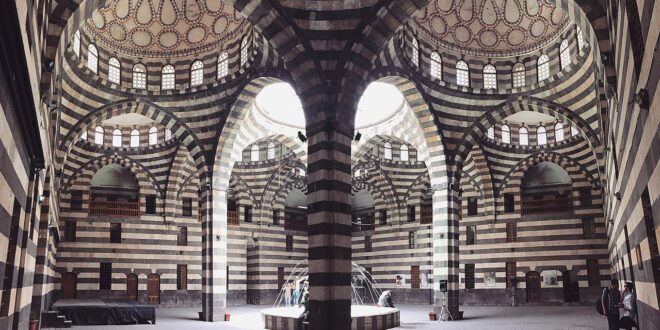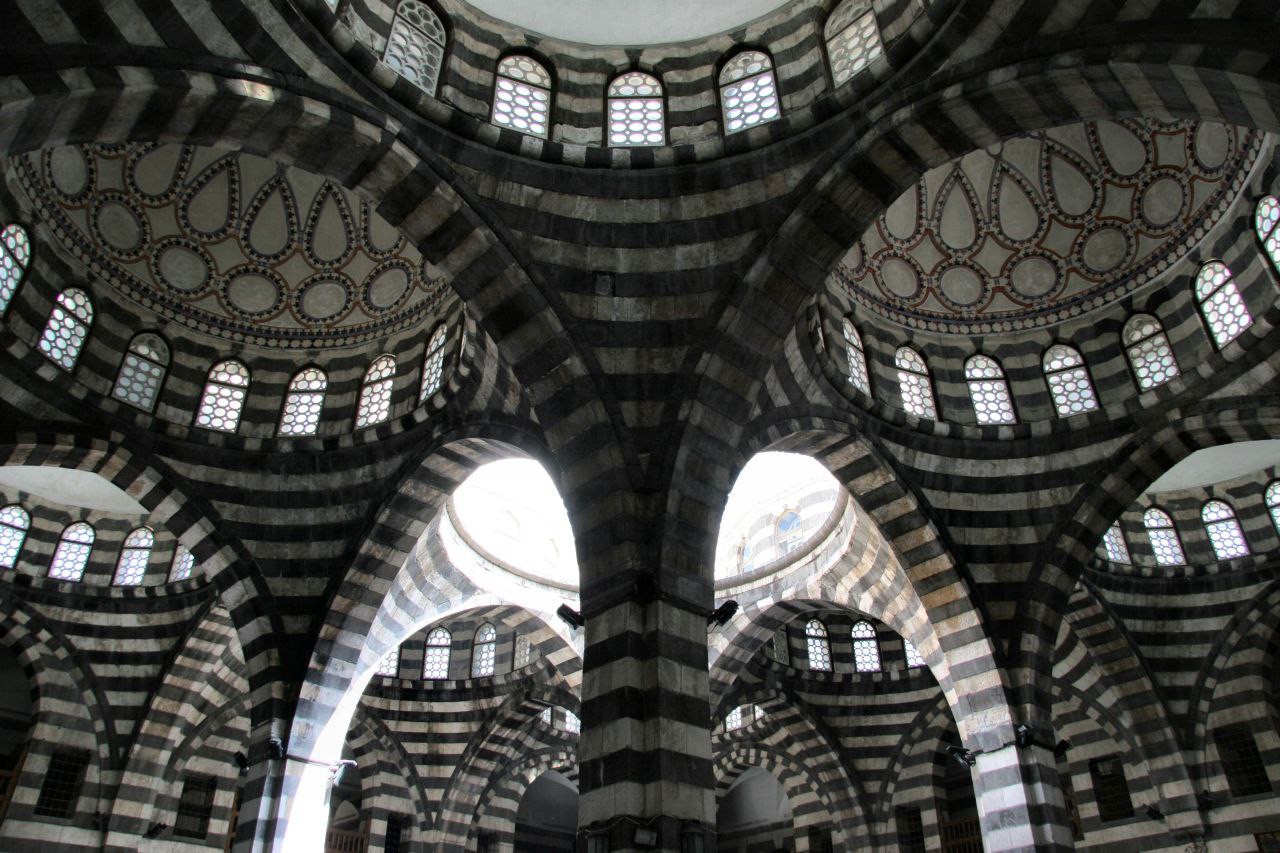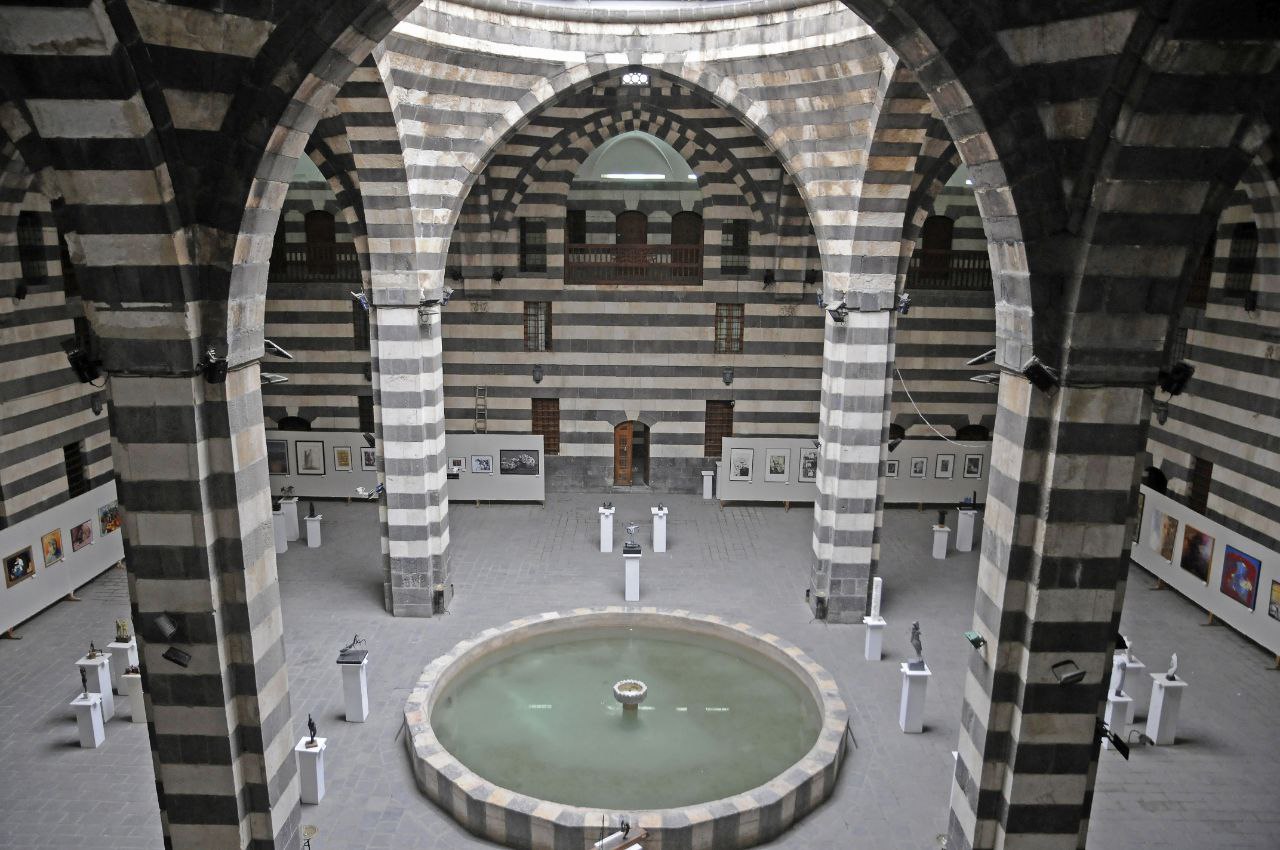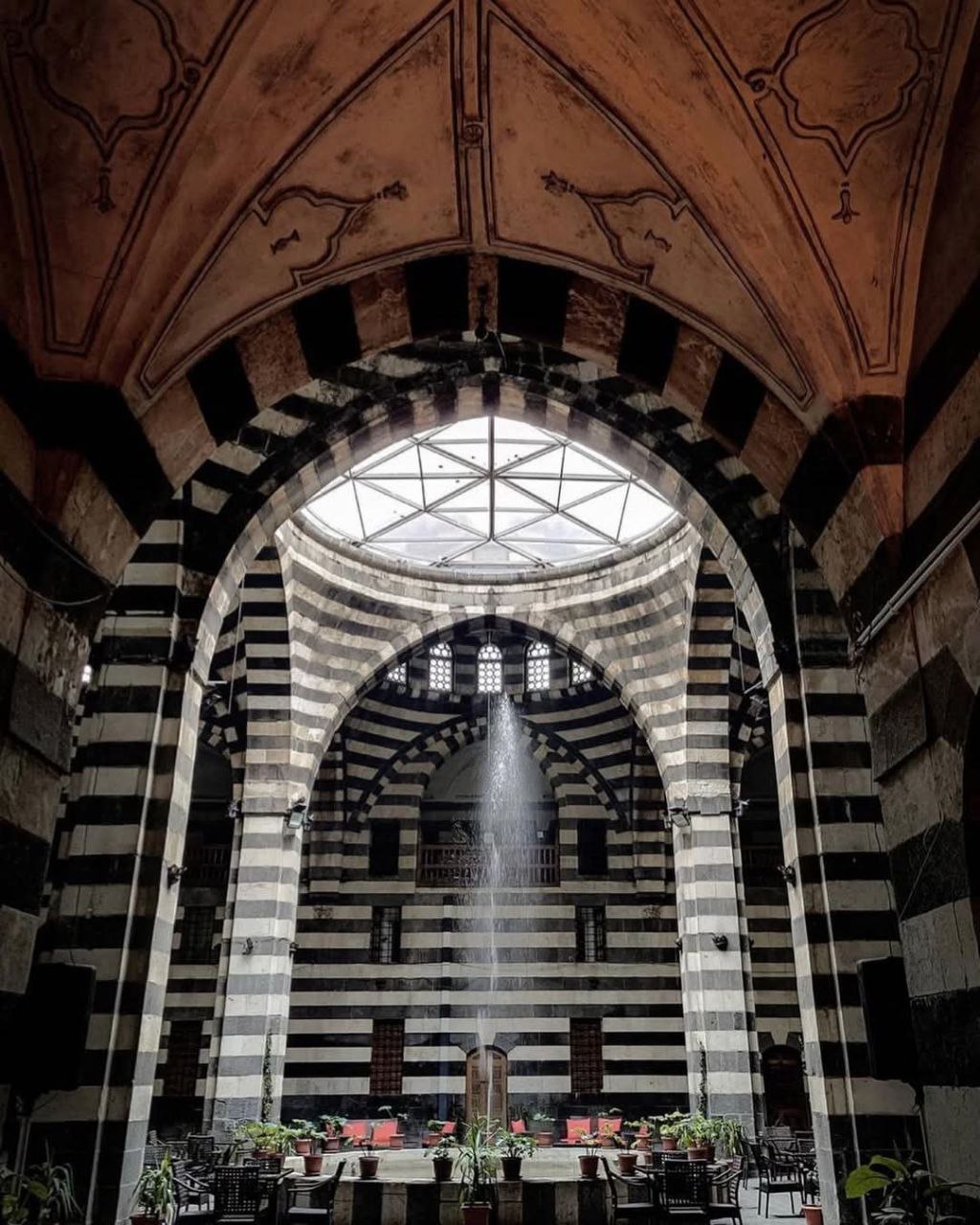Damascus SANA- Step through the ancient gates of Damascus Old City, and you’ll find yourself transported to a time of bustling caravans, exotic spices, and the vibrant hum of international trade.
Here, nestled amidst the labyrinthine souks, stands Khan As’ad Pasha, a magnificent architectural masterpiece that whispers tales of a bygone era.
More than just a building, the Khan is a living testament to Damascus’ rich history, a place where Ottoman grandeur intertwines with the soul of the Levant.
Commissioned in 1753 by the Ottoman Governor of Damascus, As’ad Pasha al-Azem, this sprawling caravanserai was designed to be more than just a place for merchants to rest. It was intended to be a symbol of the Pasha’s power and influence, a hub of commerce, and a vibrant center of social life.
Its very stones resonate with the echoes of bartering merchants, weary travellers, and the lively exchange of goods and ideas that once filled its courtyards.
The Khan’s architecture is a captivating fusion of Ottoman imperial style and the indigenous building traditions of Damascus.
Imagine a vast, open-air courtyard, the heart of the Khan, where a shimmering central fountain once provided respite from the Levantine sun. Surrounding this bustling space, a network of rooms and halls, each with its own purpose, provided lodging for merchants, storage for precious goods, and spaces for conducting business.
The intricate details, from the delicate carvings to the soaring arches, speak of the skilled artisans who poured their hearts into creating this architectural marvel. It’s a symphony of stone and light, a reminder of the craftsmanship that flourished in Damascus during its golden age.
Khan As’ad Pasha wasn’t just a place of commerce; it was the lifeblood of the city. Merchants from across the known world – from the farthest reaches of the Ottoman Empire to the bustling markets of Europe – converged within its walls.
Silk, spices, precious metals, and countless other treasures changed hands, fuelling Damascus economy and solidifying its position as a vital trading center.
The Khan also served as a melting pot of cultures, where people of different backgrounds mingled, exchanged stories, and forged connections that transcended borders.
The passage of time, however, has not been without its challenges. Just six years after its completion, a devastating earthquake rocked Damascus in 1759, leaving its mark on the Khan’s structure.
Later, in the 19th century, it served a more utilitarian purpose as the headquarters of the Ottoman police. But the Khan’s story didn’t end there. In the 20th century, a renewed appreciation for its historical and architectural significance led to extensive restoration efforts, breathing new life into this ancient landmark.
Today, Khan As’ad Pasha stands proudly as a major tourist attraction, drawing visitors from around the globe.
They come to marvel at its grandeur, to walk in the footsteps of merchants and travellers, and to connect with the rich tapestry of Damascus past.
The Khan has also been reborn as a vibrant cultural center, hosting art exhibitions, craft fairs, and other events that celebrate the city’s artistic heritage. It’s a place where history comes alive, where the echoes of the past mingle with the vibrant pulse of the present.
A Deeper Dive into the Khan’s History:
* 1753: Construction begins under the patronage of As’ad Pasha al-Azem.
* 1759: A powerful earthquake inflicts significant damage, requiring subsequent repairs.
* 19th Century: Re-purposed as a headquarters for the Ottoman police.
* 20th Century: Restoration efforts undertaken to preserve the Khan’s architectural integrity.
* Present Day: A thriving tourist destination and cultural hub, hosting exhibitions and events.
Key Features and Significance:
* Architectural Blend: A unique fusion of Ottoman and local Damascene architectural styles.
* Strategic Location: Situated in the heart of the Old City, within the bustling al-Bzouria Souk.
* Scale and Grandeur: One of the largest khans in the Middle East, showcasing the importance of Damascus as a trade center.
* Central Courtyard: A spacious open area, once featuring a large fountain, serving as the heart of the Khan’s activities.
* Cultural Impact: The Khan continues to play a vital role in Damascus cultural landscape, hosting exhibitions and fostering artistic expression.
Khan As’ad Pasha is more than just a beautiful building; it’s a window into Damascus soul.
It’s a place where the stories of centuries past continue to unfold, inviting us to listen to the whispers of history and experience the magic of this ancient city.
Manar Salameh/ Ruaa al-Jazaeri
 Syrian Arab News Agency S A N A
Syrian Arab News Agency S A N A





